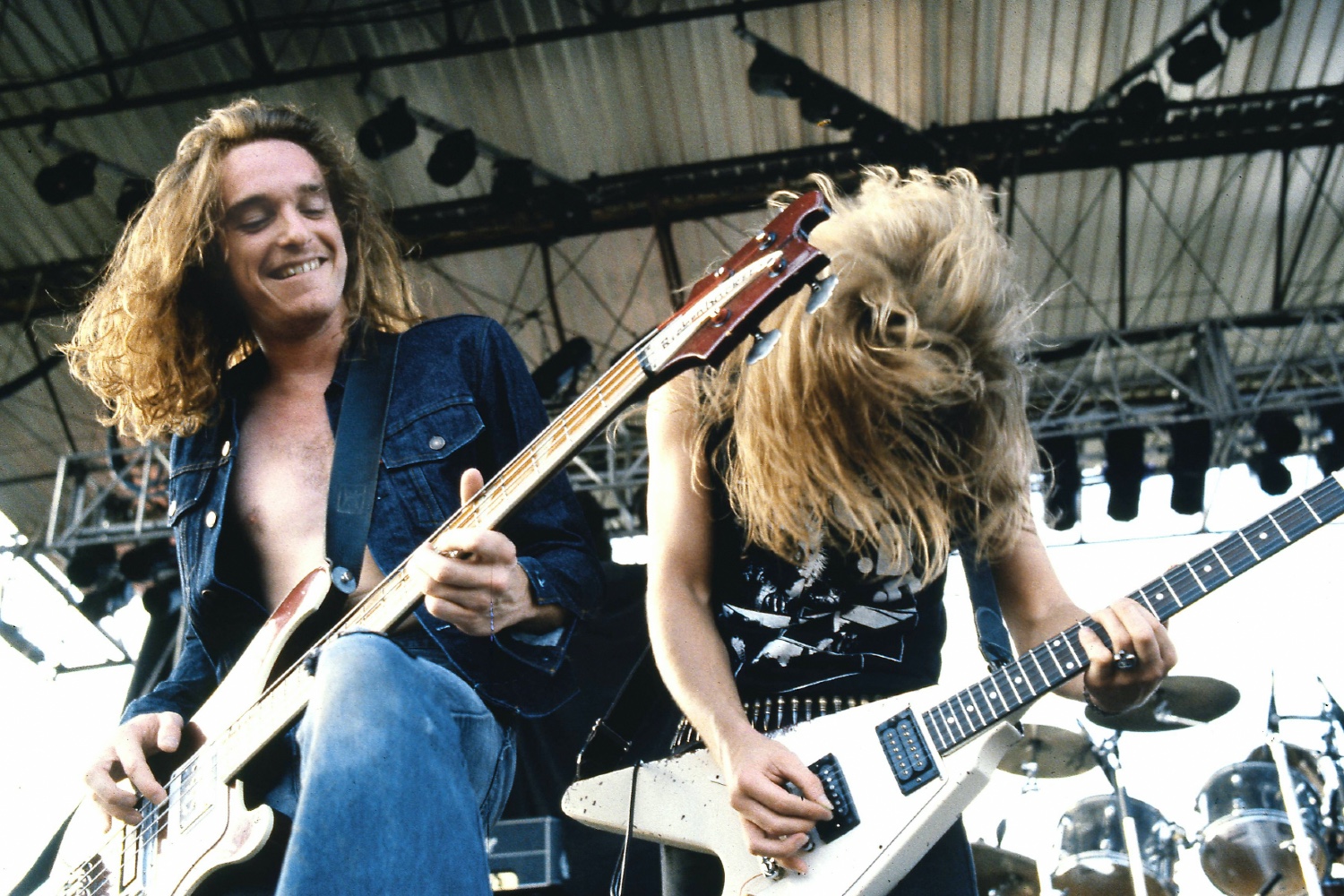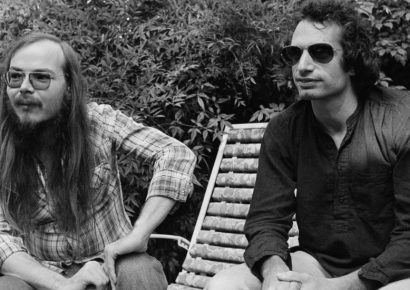An insight into Cliff Burton's gear, the tools that fuelled Metallica's golden era.
Love them or hate them, it’s hard to dispute Metallica’s musical output in the ’80s as being anything short of brilliant. With their blend of rapid fire drumming and melodic riffage arguably laying down the blueprint for heavy metal for the next 20 years – a feat which would have been unachievable without the contributions of original bassist Cliff Burton.
Cliff Burton
Head to our features section for all the latest Rig Rundowns, interviews and more.
From Kill ‘Em All to Master of Puppets, Burton’s virtuosic bass playing technique and extensive knowledge of musical theory were instrumental in propelling the band to critical recognition and mainstream success. While Burton’s life was sadly cut short in 1986 following a tour bus accident in Sweden, his tenure with Metallica is often regarded to be the bands’ finest era, influencing thousands of aspiring metalheads across the globe and writing himself into history as one of the best bassists of the 20th century.
In honour of the late great, we take a look at the gear that forged Burton’s sound and altered the discourse of heavy metal forever.
Cliff Burton bass Guitars
Rickenbacker 4001
Cliff Burton’s main bass when he joined Metallica in 1982 was a red Rickenbacker 4001, which he used to record all of the bands’ 1983 debut Kill ‘Em All and its accompanying ‘Kill ‘Em All For One’ tour, as well as several bass figures from 1984’s Ride The Lightning before it was retired due to technical problems.
Burton notably removed the Rickenbacker’s original hi-gain pickups to suit his heavy use of effects pedals and thunderous fingered bass style, fitting a Gibson EB ‘mudbucker’ humbucker in the neck position and a Seymour Duncan Stacked Jazz Bass pickup in the bridge to achieve his unique tone.
A handwritten note from Burton also reveals he initially had a third stacked Seymour Duncan Stratocaster pickup installed in place of the Rickenbacker’s foam mute and activated by a push-pull knob, eliminating unnecessary noise and acting as a secret weapon for Burton on the biting Kill ‘Em All bass showcase ‘(Anaesthesia) Pulling Teeth’.
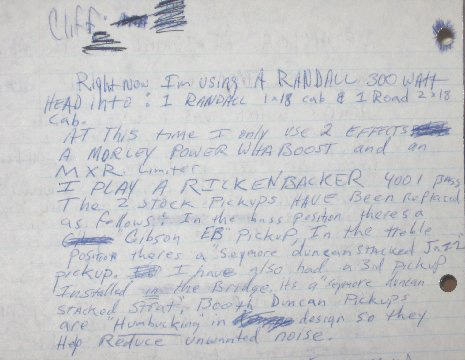
Aria SB Black N’ Gold
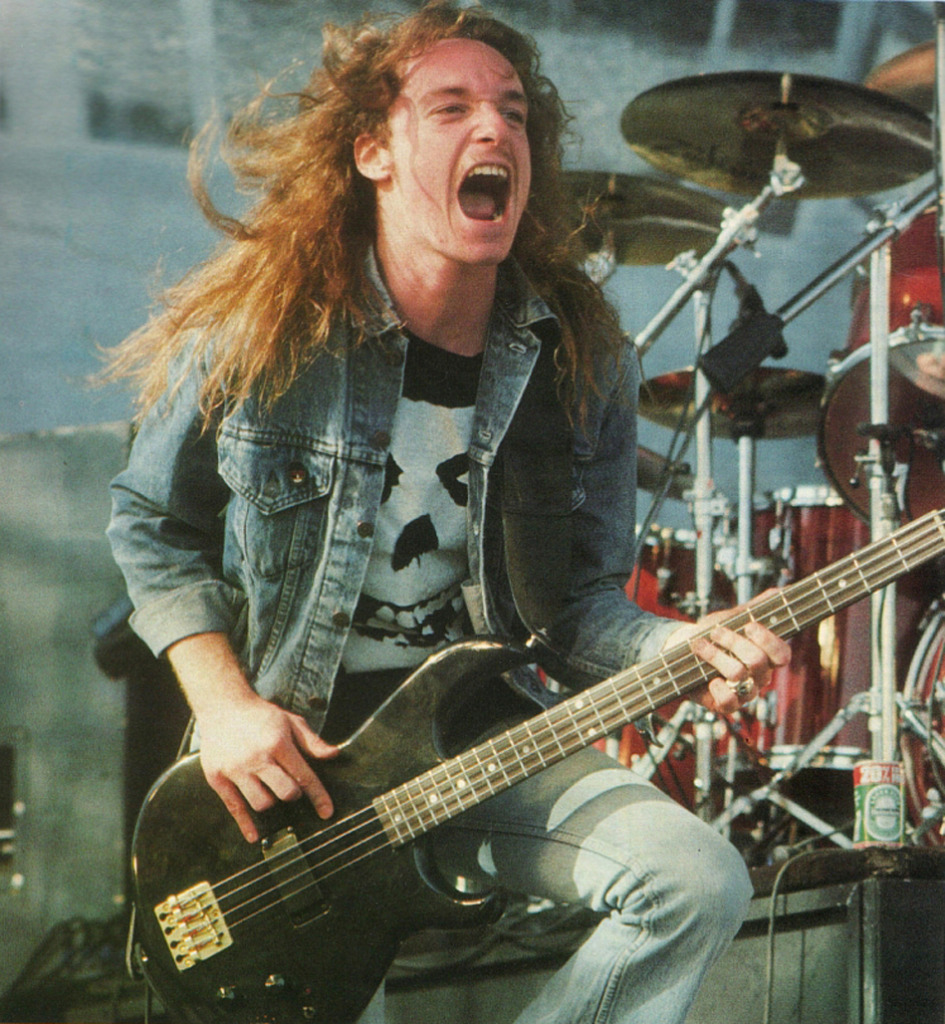
Around 1985, Burton received an endorsement from Japanese manufacturers Aria, temporarily playing an Aria Pro SB1000 before receiving his trademark Aria Black n’ Gold.
The SB Black n’ Gold soon became Burton’s preferred bass and saw extensive studio and live use from 1985-86, particularly on the recording of Master Of Puppets.
In 2013, Aria honoured Burton with a signature model based off the specifications of his SB Black n’ Gold – check it out below.
Alembic Spoiler II
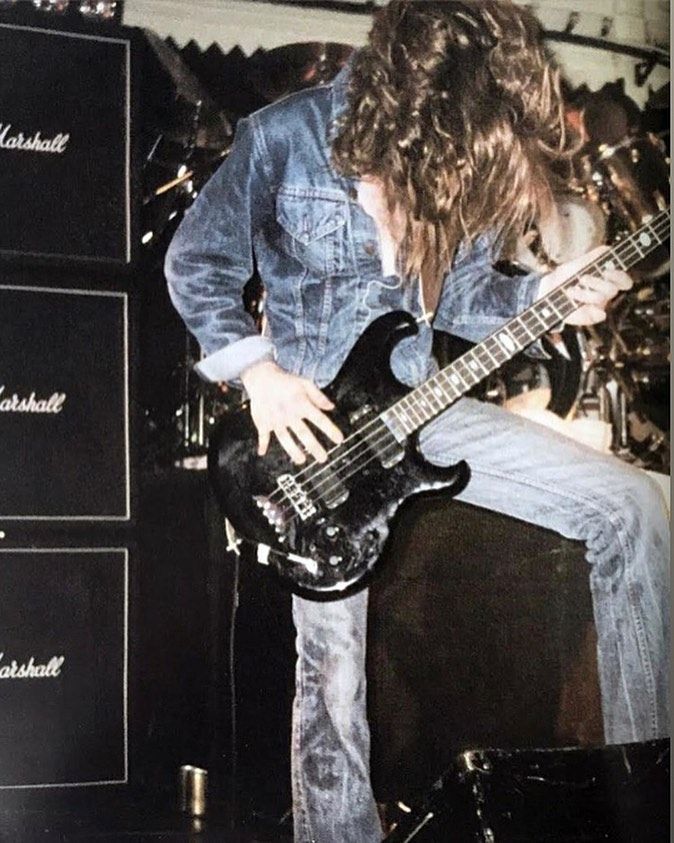
Between Kill ‘Em All and Ride The Lightning, Burton used a coveted early ’80s Alembic Spoiler II for various live appearances, fitted with dual AXY4 pickups. However, the instrument was stolen from Burton’s car in late 1985, and its current whereabouts are unknown.
Acoustic Guitar
Burton can also be heard playing a drop-tuned acoustic guitar on the intro to Ride The Lightning opener ‘Fight Fire With Fire’.
“Cliff went the whole length and learned musical theory and everything,” said lead guitarist Kirk Hammett of Burton’s influence on the band in a 2016 Guitar World interview. “He was way into harmonies. James really absorbed the dual-harmony thing and took it to heart. He made it his thing, but it was originally Cliff’s. Cliff also inspired James greatly on counterpoint and rhythmic concepts. He had a really good grasp of playing the guitar, and a good grasp of classical modulations. That intro was his piece. We heard it and stuck it onto ‘Fight’, and it worked fantastic.”
Cliff Burton Amplifiers
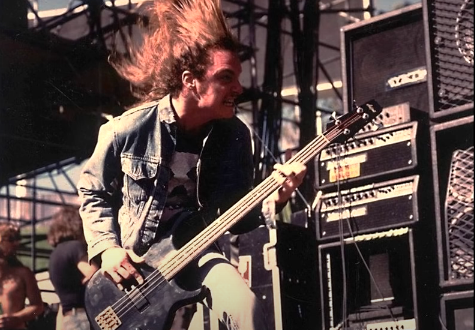
While he initially paired a Sunn Beta Bass Amp and a Peavy Mark IV Series 400 head with stock cabs for early gigs, the source of Burton’s heavy tone in Metallica came from two hefty valve powered Mesa Boogie D-180 heads, with one being used for a clean signal and the other processing Burton’s intricate effects chain.
Burton fed his amp heads into two seperate cabinet enclosures, with images suggesting he tended to favour a Mesa Boogie 4″x12″ in conjunction with a 1″x15″ to fill out the bottom end of his signal.
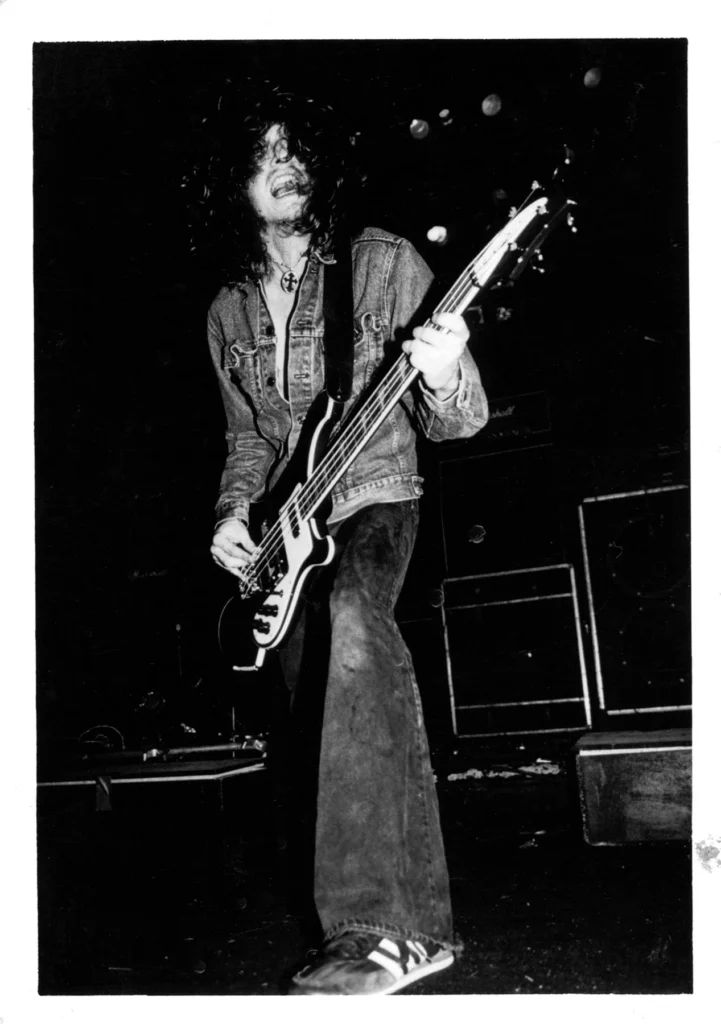
Effects
Morely Power Wah Boost
Burton was renowned for his distinctive use of a wah-wah pedal throughout his career, adopting a Hendrix-esque approach to filter through frequencies to achieve a sweeping bass solo tone. The Morely Power Wah Boost can be seen on Burton’s pedalboard for nearly every Metallica gig, and can notably be heard Ride The Lightning standout ‘For Whom The Bell Tolls’.
Boss CS-2 Compression Sustainer
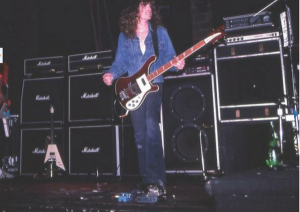
Burton also favoured a Boss CS-2 pedal to squeeze extra sustain into his rig, taking his thunderous fingered bass style to new volumes with the band, which can be seen in this picture next to his Morely Power Wah.
Electro-Harmonix Russian Big Muff
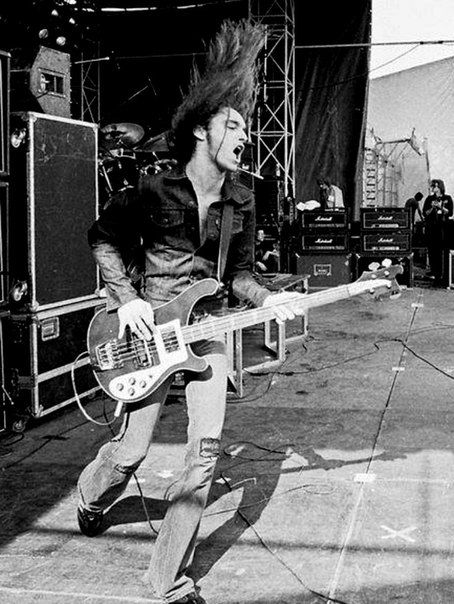
The unique sonic characteristics of the Russian-made EHX Big Muff can be prominently heard as the power behind Burton’s distorted tone on Metallica’s first two albums, however around the recording and touring of Master Of Puppets, he swapped his Big Muff out for an Ibanez TS-808 Tube Screamer overdrive to power the brunt of his tube Mesa Boogie heads.
Ibanez HD1500 Harmonics/Delay Rack Unit
Burton also used a rack-mounted Ibanez harmonics/delay effect unit for performing volume swells in conjunction with his Morely Power Wah, with Burton detailing its use in a Thrash Metal interview around the recording of Master Of Puppets.
“On this album there’s an intro to a song called ‘Damage (Inc),’ done all on bass,” he said. “It’s about eight or 12 tracks of bass, a whole lot of harmonies and volume swells and effects and stuff. I would hesitate to call it a bass solo, it’s more just an intro, but it’s all bass.”
Keep up to date with Metallica here.
